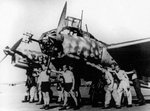Night Fighter Nut
Master Sergeant
I hope I'm not repeating anything, I've read through this thread pretty good and may have some trivial information that might help. I read some aircraft project history files. I wanted to look at it as a project manager would. What was right and what was wrong. In the case of the He 219, Heinkle used engines that were adequite for the job but had planned on converting to jet engines when enough of them became available. Unfortunately for the plane, higher command decided not to support this project in favor of the Ju 88's. Another factor against this plane is that the material supply flow was widely dispersed in three locations if my information is correct. This caused some serious delays in the build of this plane. They also suffered from feature creep. Everytime someone had an idea, they tried it without going through a process control causing more delays and lots of confussion as to the definitive product.
For the P-61, one of the reasons pilots in the Pacific theater liked the plane was because the lead test pilot for the Black Widow project flew to units in the Pacific to teach them how to fly it. There was an aritcle in the Smithsonian magazine honoring the man call the "Meistro." His actual name escapes me for the moment. It was said that he loved the P-61 so much, he later bought one for himself. In the article it states that many pilots were apprehensive about flying this plane because it was about the size of a medium bomber. They didn't believe it could maneuver like a fighter. According to the ariticle, the Meistro proved that it was very nimble and could be flown like a fighter. It was because of this he was given the Meistro monicor. I didn't find any information saying that this was done with the pilots in Europe. It is my hypothesis that this may be one reason that pilots in the Pacific did better with the plane than their counterparts in Europe.
For the P-61, one of the reasons pilots in the Pacific theater liked the plane was because the lead test pilot for the Black Widow project flew to units in the Pacific to teach them how to fly it. There was an aritcle in the Smithsonian magazine honoring the man call the "Meistro." His actual name escapes me for the moment. It was said that he loved the P-61 so much, he later bought one for himself. In the article it states that many pilots were apprehensive about flying this plane because it was about the size of a medium bomber. They didn't believe it could maneuver like a fighter. According to the ariticle, the Meistro proved that it was very nimble and could be flown like a fighter. It was because of this he was given the Meistro monicor. I didn't find any information saying that this was done with the pilots in Europe. It is my hypothesis that this may be one reason that pilots in the Pacific did better with the plane than their counterparts in Europe.

